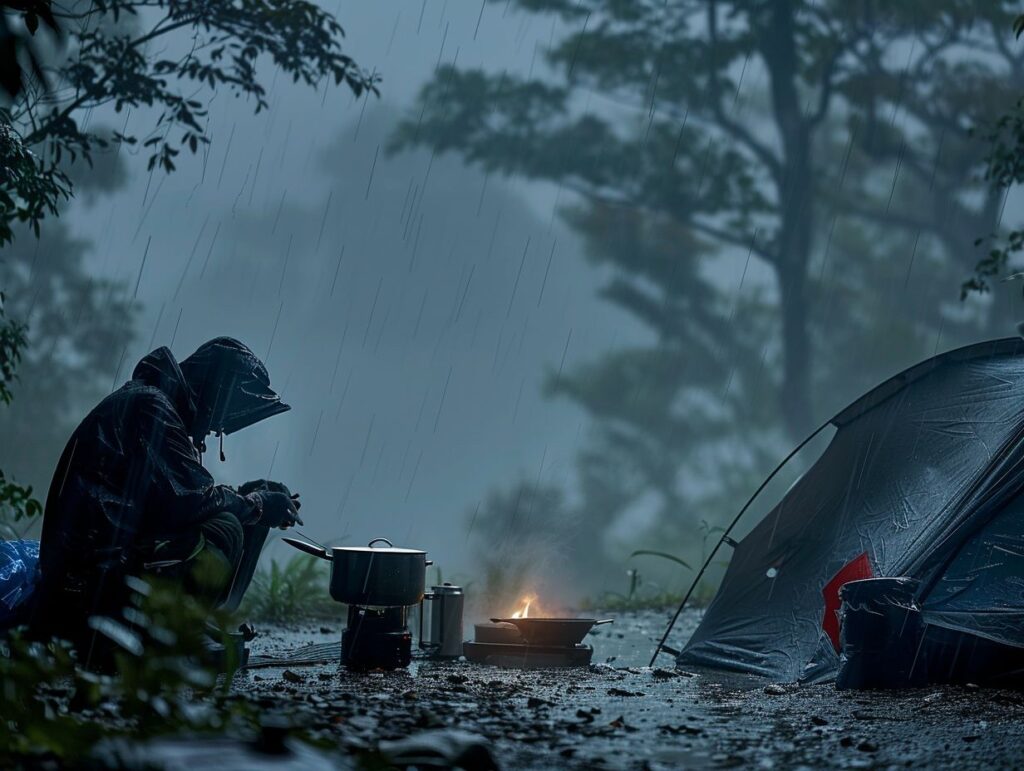Are you a camping enthusiast looking to take your outdoor cooking skills to the next level?
This comprehensive guide will explore the different types of camping stoves and how to use them in a variety of extreme weather conditions.
From preparing for rainy and windy weather to keeping your stove functioning in cold and hot temperatures, we’ve got you covered.
Get ready to elevate your camping experience with these essential tips and tricks.
Key Takeaways:
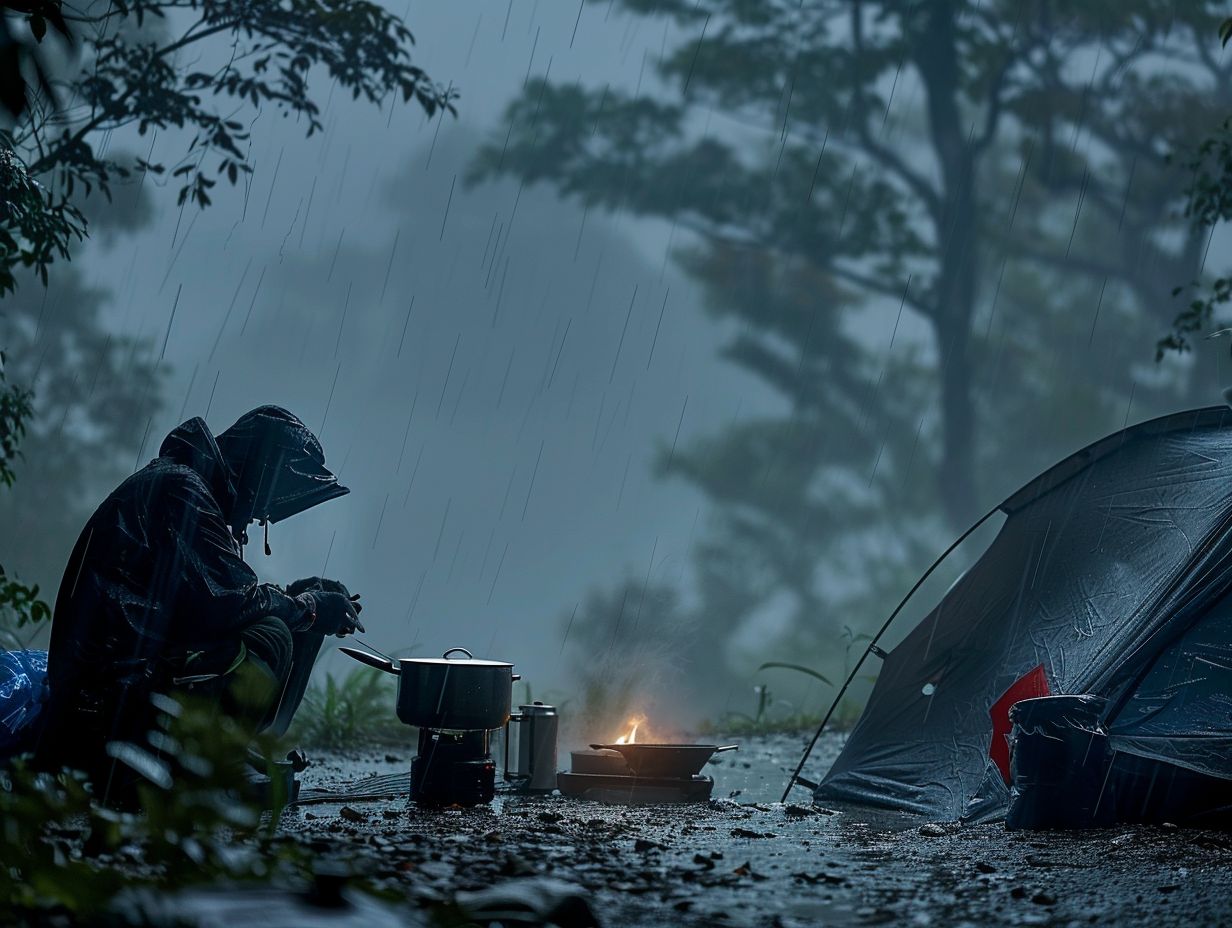
- Always be prepared for extreme weather conditions when using a camping stove, including rain, wind, cold, and hot weather.
- Take extra precautions to protect your camping stove from weather elements, such as using a rain cover and keeping it warm in cold weather.
- Knowing how to properly set up and maintain your camping stove in extreme weather can ensure a successful outdoor cooking experience.
Preparing for Extreme Weather
It is imperative to make necessary preparations for extreme weather conditions during a camping trip to guarantee the functionality of the camping stove and to enhance the overall safety and success of the outdoor excursion, particularly in challenging environments such as cold weather or high winds.
What Weather Conditions Should You Be Prepared For?
When preparing for a camping trip, it is imperative to anticipate various weather conditions, such as rain, wind, and cold temperatures, in order to guarantee the safe and effective operation of your camping stove.
Inclement weather, particularly rain, can present challenges due to the difficulty in igniting wet wood. To address this issue, it is advisable to pack waterproof matches or a lighter to ensure the ignition of your stove even in damp conditions.
Similarly, windy conditions can impact the flame intensity of the stove. To mitigate this effect, it is recommended to locate a sheltered cooking area to reduce wind interference.
In colder temperatures, it is essential to select a suitable fuel type that performs well under low temperatures. Maintaining stability and security of the stove is crucial to prevent accidents, especially in windy conditions.
What Extra Precautions Should You Take?
Implementing additional precautions with the camping stove during a camping trip is essential to prevent accidents and ensure a safe and enjoyable experience, especially in adverse weather conditions.
It is vital to secure the stove system properly in windy conditions to prevent accidental tipping. It is advisable to place the stove on a stable surface and use a windbreak to protect it from gusts. In addition, regular checks for fuel leaks by inspecting the fuel lines and connections are necessary.
Before lighting the stove, it is crucial to carefully check for any signs of wear or damage. It is advisable to have a fire extinguisher nearby and never leave the stove unattended while it is in use. These precautions are crucial for maintaining a safe camping environment.
Using a Camping Stove in Rainy Weather
Using a camping stove during stormy weather requires particular considerations to ensure safety and effective cooking. The presence of moisture and wet conditions could potentially impact the stove’s performance and fuel efficiency.
How to Protect Your Stove from Rain
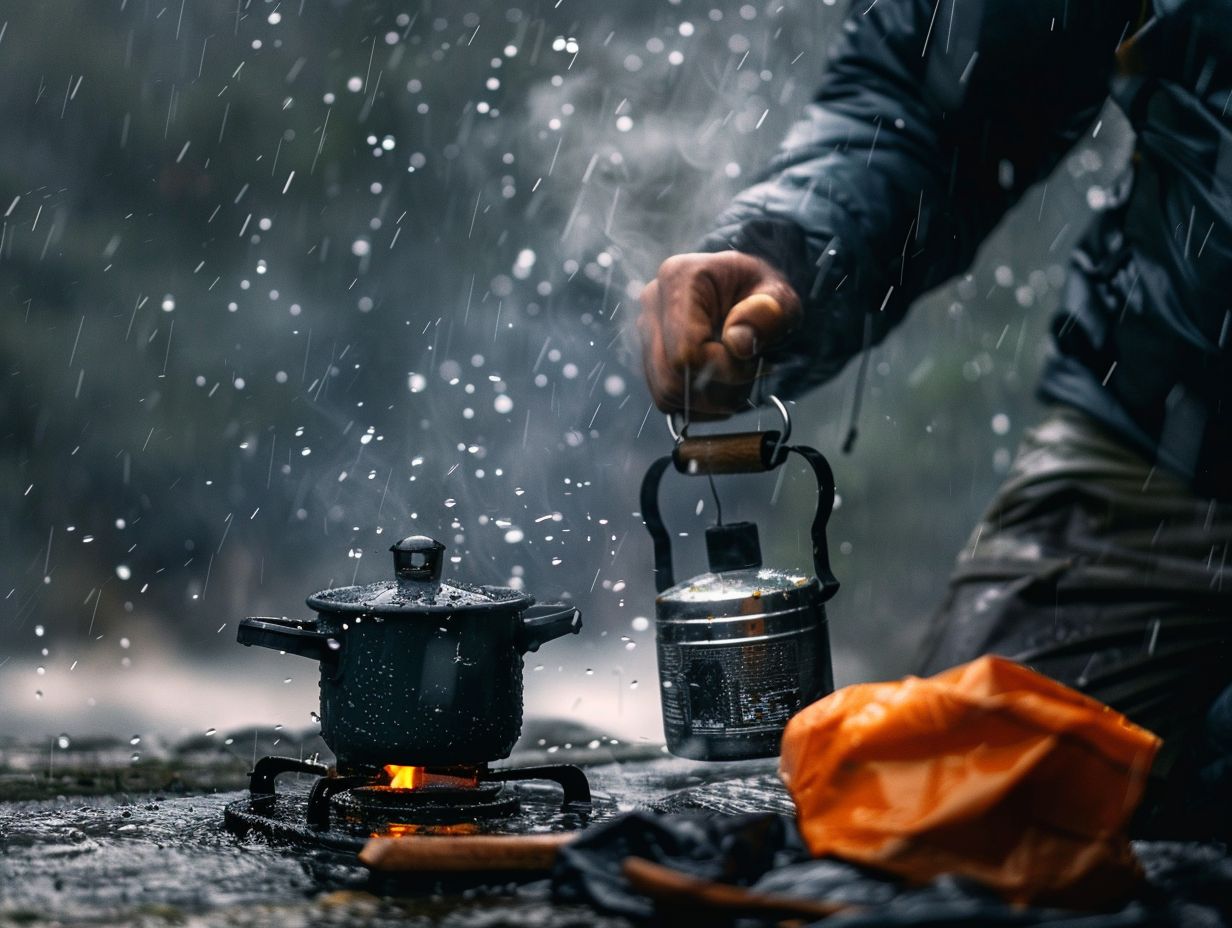
To protect the camping stove from rain, it is essential to establish a suitable shelter and follow safety guidelines to reduce the impact of water on the stove’s functionality.
- One effective way to create a shelter for the camping stove involves using tarps. Start by identifying a suitable location with overhead protection. Position the tarp above the stove, ensuring a secure attachment to nearby trees or poles. This setup will help shield the stove from rain and prevent water from seeping into vital components.
- Also, consider setting up a nearby tent to provide additional protection against harsh weather conditions. When siting the stove, ensure it is placed on a stable surface and away from flammable materials to reduce the risk of accidents.
- By adopting these precautionary measures, the camping stove can be protected from moisture and continue to function reliably even in challenging weather conditions.
What to Do if Your Stove Gets Wet?
When a camping stove becomes wet, it is imperative to adhere to safety guidelines and proper maintenance procedures to restore its functionality and ensure safe operation. An initial course of action involves delicately drying the stove using a clean cloth or towel.
It is advisable to disassemble the stove to the greatest extent possible to facilitate thorough drying. Avoid utilising high heat sources, such as a hairdryer or open flames, as they have the potential to exacerbate damage to the stove.
Following complete drying, a meticulous examination of all components for any indications of damage or corrosion is essential. Ahead of usage for cooking purposes, it is critical to test the stove in a well-ventilated outdoor setting to confirm the absence of leaks or malfunctions.
Routine maintenance practices, such as lubricating moving parts and inspecting fuel lines, are imperative to prevent future complications stemming from exposure to moisture.
Using a Camping Stove in Windy Weather
Using a camping stove in windy conditions poses distinct challenges, as the presence of strong winds can affect the stove’s flame and overall functionality. This requires careful stove arrangement and strict adherence to safety protocols to ensure successful cooking results.
How to Set Up Your Stove in Windy Conditions
To set up a camping stove in windy conditions, it is imperative to locate a flat surface and utilise windbreaks to safeguard the flame and optimise safe and effective cooking. Commence the process by identifying a wind-sheltered area, such as in proximity to a rock formation or trees, to minimise the direct impact of gusts on the flame.
Place the stove on a stable surface, ensuring it is level to prevent any potential spillage. Strategically position windbreaks around the stove, utilising materials like rocks or a collapsible windscreen to establish a barrier against the wind.
Always conduct a thorough check for any flammable materials in the vicinity and guarantee adequate ventilation to prevent gas accumulation. Continuously monitor the flame to maintain stability and adjust the stove settings accordingly.
What to Do if Your Stove Keeps Going Out?
When encountering a camping stove that repeatedly goes out in windy conditions, it is crucial to diagnose the problem and adhere to safety guidelines to facilitate the stove’s ability to sustain a flame and function optimally.
A prevalent issue leading to a camping stove going out in windy environments is the lack of adequate protection from gusts. Wind disturbances can destabilise the flame, resulting in its extinguishment. To mitigate this problem, it is recommended to construct windbreaks around the stove utilising natural barriers such as rocks, trees, or camping equipment to create a shielded area.
Ensuring that the stove is positioned on a secure, even surface can aid in maintaining a consistent flame. Regular inspection of the fuel source and connections for potential leaks or obstructions that may affect the stove’s operation is advised.
Furthermore, it is imperative to operate the stove in well-ventilated surroundings and have a fire extinguisher readily available for emergency situations.
Using a Camping Stove in Cold Weather
Using a camping stove in cold weather requires special considerations due to the potential impact of low temperatures on fuel efficiency, burner performance, and overall stove functionality. Adjustments may be necessary to ensure effective cooking in such conditions.
How to Keep Your Stove Warm and Functioning
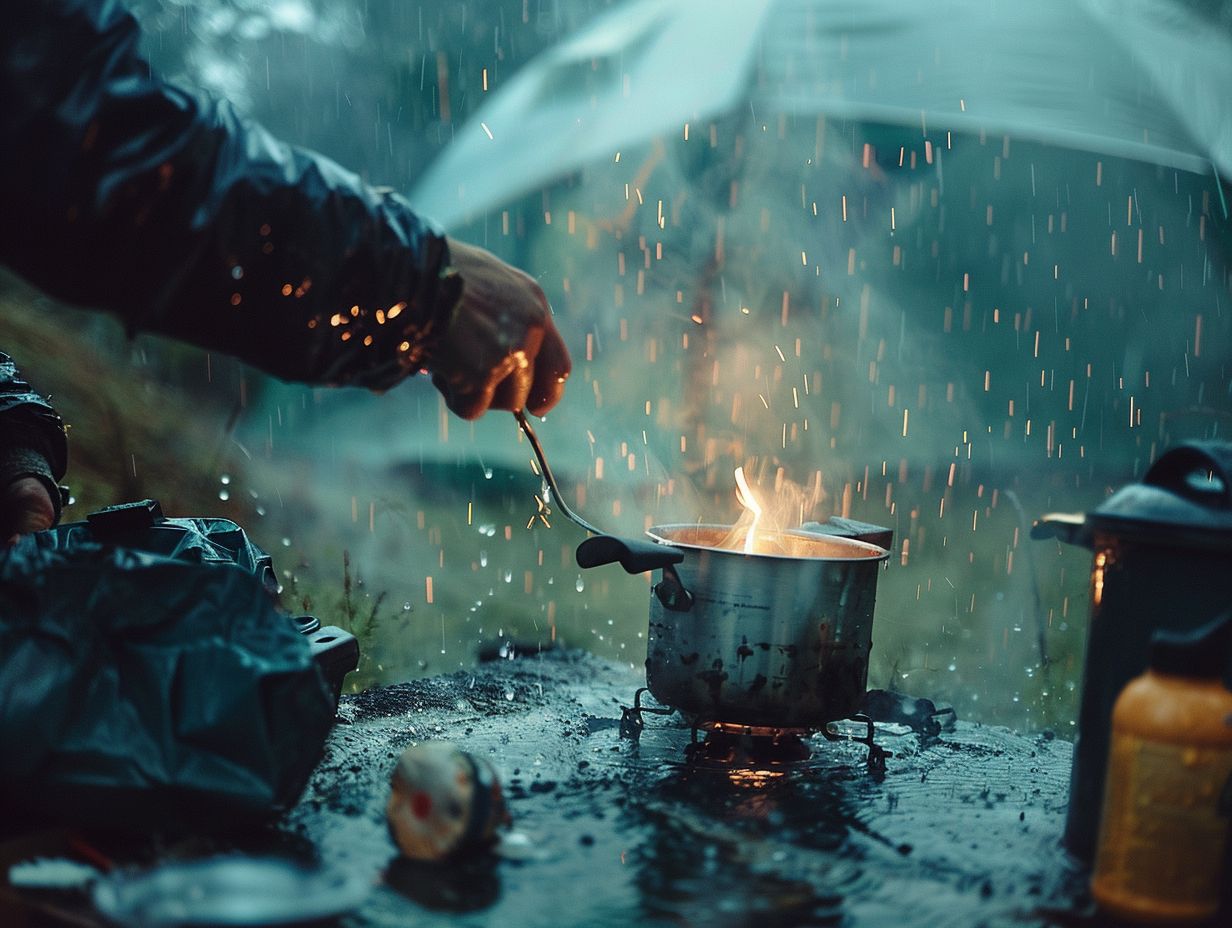
To maintain the functionality and optimum performance of a camping stove in cold weather conditions, it is imperative to adhere to safety protocols and employ strategies that can enhance its capabilities despite the challenges posed by low temperatures.
A critical measure in ensuring the warmth and efficiency of a stove in cold weather is the preheating of the stove before commencing the cooking process. This practice not only facilitates a quicker cooking time but also aids in maintaining a consistent temperature throughout.
Additionally, insulating the stove by situating it on a heat-resistant mat or using wind guards can serve to minimise heat dissipation and enhance operational efficiency. It is essential to conduct a thorough inspection for any leaks or mechanical issues prior to usage, and the presence of a fire extinguisher in close proximity is strongly recommended as a safety measure.
Adherence to these established protocols will enable individuals to partake in outdoor cooking activities in a safe and effective manner.
What to Do if Your Fuel Freezes?
In cases where fuel becomes frozen in cold weather conditions, it is crucial to adhere to prescribed troubleshooting procedures and safety precautions in order to restore fuel flow and ensure the effective operation of your camping stove.
Upon encountering frozen fuel, the initial step should involve cautiously warming the fuel canister through the application of body heat or warm water. It is imperative to refrain from utilising open flames for this purpose, as it poses inherent risks to safety.
Should the fuel fail to thaw readily, immersing the canister in a vessel of lukewarm water can serve to expedite the process. To preclude prospective occurrences of fuel freezing, it is advisable to either store the fuel in a warmer environment or introduce a fuel stabiliser to lower its freezing threshold.
In addition, it is recommended to conduct regular inspections of your equipment for any indications of impairment or obstructions in order to ensure its optimal functionality.
Using a Camping Stove in Hot Weather
Using a camping stove during hot weather requires compliance with safety precautions and appropriate stove handling procedures. Increased temperatures can affect the performance and fuel efficiency of the stove, thus necessitating the adoption of measures to ensure safe cooking practices.
How to Keep Your Stove Cool and Safe
To maintain the safety and optimal performance of the camping stove during hot weather conditions, it is imperative to adhere to safety guidelines and maintenance protocols that prevent overheating and ensure consistent functionality.
Proper ventilation is a critical aspect to consider when using the camping stove, as adequate airflow plays a pivotal role in mitigating excessive heat accumulation. Additionally, it is recommended to routinely clean the stove’s burners and fuel lines to uphold peak operational efficiency and mitigate the likelihood of malfunctions.
Regular inspection of the hoses and connections for any indications of wear or damage is advised, with prompt replacement of any defective components to ensure operational integrity. Furthermore, it is essential to exercise caution by keeping flammable materials at a safe distance from the stove and operating it on a stable surface to prevent accidents.
By conscientiously adopting these maintenance practices and safety measures, individuals can partake in cooking activities with peace of mind and security, even amidst the most elevated temperatures.
What to Do if Your Stove Overheats?
In case of a camping stove overheating in hot weather, it is crucial to adhere to safety protocols and follow troubleshooting procedures to mitigate the situation and ensure safe operation.
To address an overheating camping stove, the following steps should be taken:
- Immediately power off the stove and transfer it to a secure, non-flammable surface.
- Allow the stove to cool naturally before attempting to handle it. It is advisable to refrain from applying water to the stove as this action could result in damage.
- Inspect for any debris or obstructions that could be contributing to the overheating.
- Upon the stove cooling down, assess its functionality to confirm proper operation.
- To prevent future instances of overheating, maintain the stove by routinely cleaning it and utilising it in a well-ventilated environment.
Frequently Asked Questions
How do I safely use a camping stove in extreme weather?
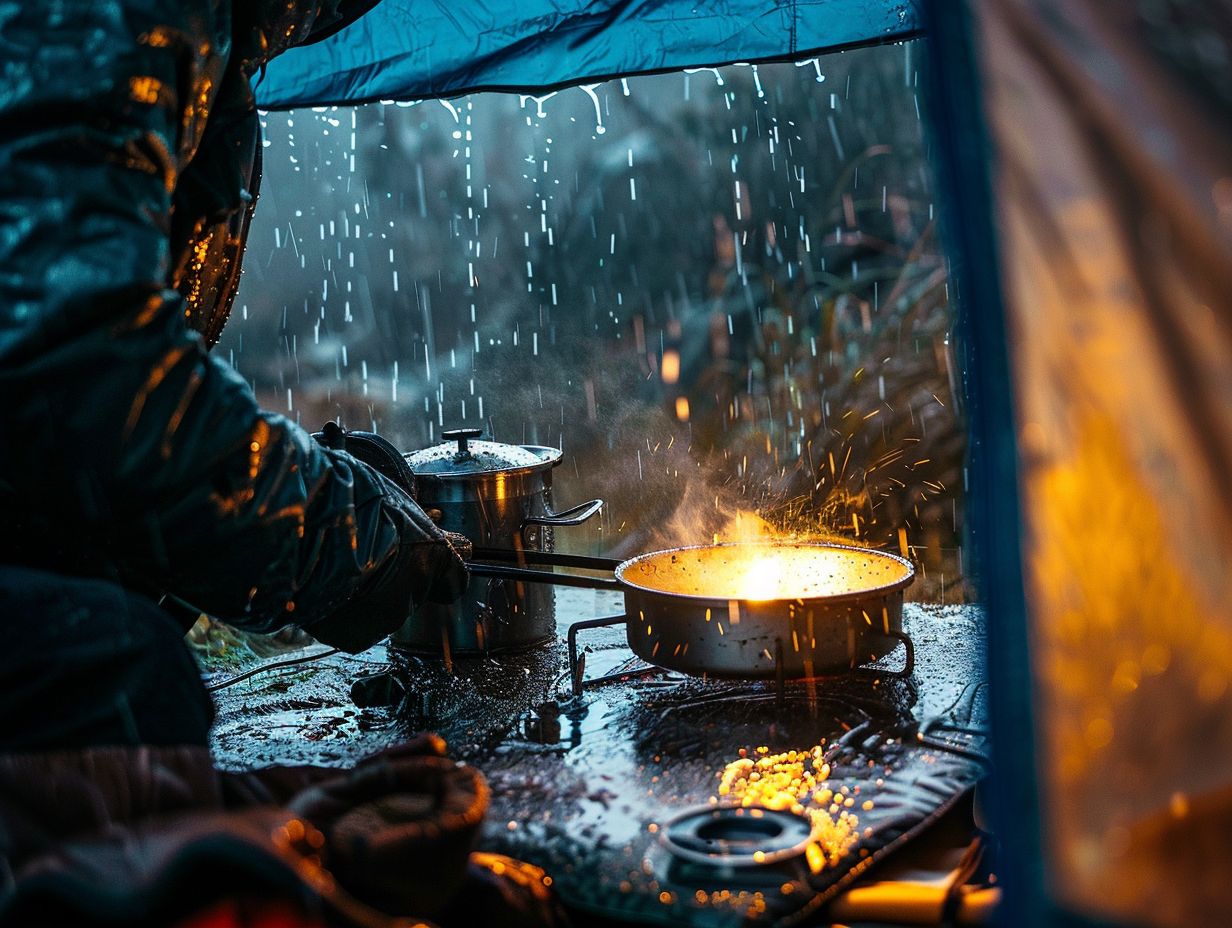
First and foremost, make sure you are following all safety precautions provided by the manufacturer. Additionally, always use your camping stove in a well-ventilated area and keep it away from any flammable materials. In extreme weather, it is crucial to use a windscreen to protect the flame and maintain a steady heat source.
What fuel should I use for my camping stove in extreme weather?
It is recommended to use a liquid fuel, such as white gas or kerosene, for your camping stove in extreme weather. These fuels are more reliable and efficient in cold temperatures compared to canister fuels. Be sure to properly store and handle the fuel to avoid any accidents.
How do I light a camping stove in extreme weather?
Lighting a camping stove in extreme weather can be challenging, but there are a few tips to make it easier. Before lighting, make sure your stove and fuel are properly primed and warmed up. Use a long-handled lighter or matches to light the stove, and protect the flame from wind or moisture by using a windscreen or heat reflector.
What should I do if my camping stove gets wet in extreme weather?
If your camping stove gets wet, it is crucial to dry it completely before use. This can be done by wiping it down with a towel or letting it sit in a dry place for some time. Do not attempt to light a wet stove, as it can be dangerous and damage the stove.
How do I maintain my camping stove in extreme weather conditions?
In extreme weather conditions, it is important to regularly check and clean your camping stove. This will help ensure that it is functioning properly and prevent any potential issues. Additionally, make sure to store your stove in a dry and protected area when not in use.
Can I use a camping stove in extreme cold weather?
Yes, you can use a camping stove in extreme cold weather, but it requires some extra precautions. Make sure to warm up the fuel and stove before use, protect the flame from wind and moisture, and regularly check and maintain the stove. It is also recommended to have a backup stove or alternative cooking methods in case of any issues.

